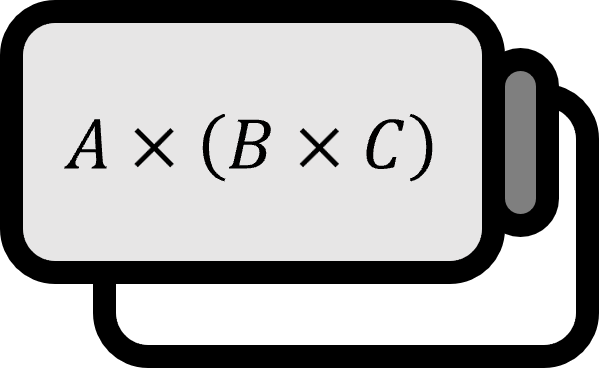Curvilinear Coordinate System and the Del Operator
Definition
In any curvilinear coordinate system where the coordinates are $(q_{1}, q_{2}, q_{3})$, the del operator is as follows.
$$ \begin{align*} \nabla &= \dfrac{1}{h_{1}}\dfrac{\partial}{\partial q_{1}} \widehat{\mathbf{q}}_{1} + \dfrac{1}{h_{2}}\dfrac{\partial}{\partial q_{2}} \widehat{\mathbf{q}}_{2} + \dfrac{1}{h_{3}}\dfrac{\partial}{\partial q_{3}} \widehat{\mathbf{q}}_{3} \\ &= \sum\limits_{1}^{3} \dfrac{1}{h_{i}}\dfrac{\partial}{\partial q_{i}} \widehat{\mathbf{q}}_{i} \end{align*} $$
Here, $h_{i}$ represents the scale factor.
Description
The del operator is not a vector, but for convenience, it is represented as above.
Cartesian Coordinate System
In the Cartesian coordinate system, $q_{1} = x$, $q_{2} = y$, and $q_{3} = z$ are used, and the scale factor is $h_{1} = h_{2} = h_{3} = 1$.
$$ \nabla = \dfrac{\partial}{\partial x} \widehat{\mathbf{x}} + \dfrac{\partial}{\partial y} \widehat{\mathbf{y}} + \dfrac{\partial}{\partial z} \widehat{\mathbf{z}} $$
Spherical Coordinate System
In the spherical coordinate system, $q_{1} = r$, $q_{2} = \theta$, and $q_{3} = \phi$ are used, and the scale factors are $h_{1} = 1$, $h_{2} = r$, and $h_{3} = r\sin\theta$.
$$ \nabla = \dfrac{\partial}{\partial r} \widehat{\mathbf{r}} + \dfrac{1}{r}\dfrac{\partial}{\partial \theta} \widehat{\boldsymbol{\theta}} + \dfrac{1}{r\sin\theta}\dfrac{\partial}{\partial \phi} \widehat{\boldsymbol{\phi}} $$
Cylindrical Coordinate System
In the cylindrical coordinate system, $q_{1} = \rho$, $q_{2} = \phi$, and $q_{3} = z$ are used, and the scale factors are $h_{1} = 1$, $h_{2} = \rho$, and $h_{3} = 1$.
$$ \nabla = \dfrac{\partial}{\partial \rho} \widehat{\boldsymbol{\rho}} + \dfrac{1}{\rho}\dfrac{\partial}{\partial \phi} \widehat{\boldsymbol{\phi}} + \dfrac{\partial}{\partial z} \widehat{\mathbf{z}} $$
